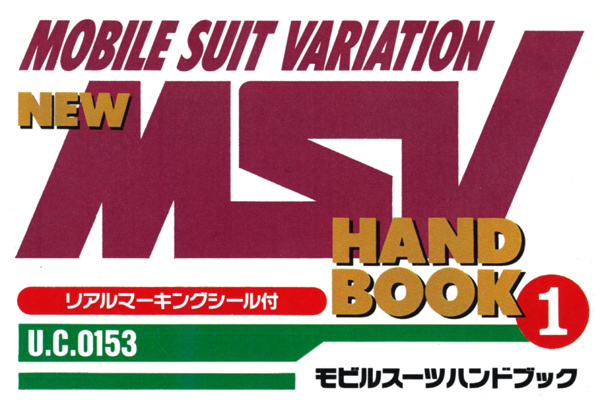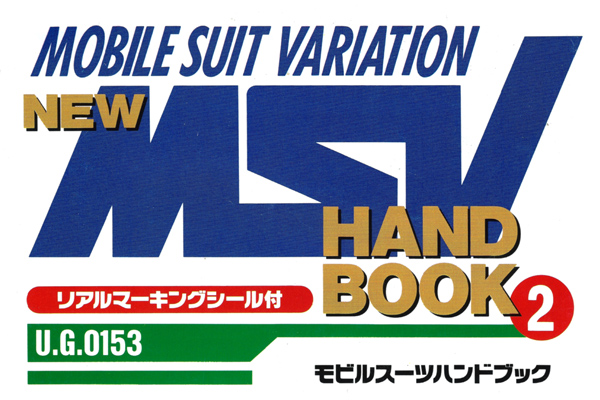MSA-120


Model Number: MSA-120 (or MSA-0120)
Rollout: U.C.0111
Head Height: 15.0m
Base Weight: 17.5t
Full Weight: 54.1t
Armor Materials: unknown
Generator Output: 3040kW (normal mode), 6800kW (mega boost mode)
Thruster Propulsion: 180,000kg (normal mode), ~230,000kg (mega boost mode)
Armaments:
hyper mega launcher
high-impact gun
Pilot(s): unknown
In U.C.0102, a proposition was made by the Strategic Naval Research Institute (SNRI) to the Federation government to scale down their mobile suits. Around November U.C.0105, Anaheim Electronics had begun development of small-scale mobile suits at the request of the Federation Forces.
By U.C.0109, they rolled out the small-scale mobile suit Heavygun and come U.C.0111, only partially satisfied with the performance record of the Heavygun, the military drew up a request for further development of high-performance machines. The request came due to skyrocketing procurement costs and their goal was to create miniaturized mobile suits that were easy to supply without degrading performance.
In response to this request, a competition was held between Anaheim Electronics and SNRI. The long-established Anaheim would be introducing a variant of their RGM-109, the MSA-120 model, while the newcomer SNRI would be introducing the concept of the F9-type (the F90) via a prototype that rolled out in September U.C.0111. Both suits had passed preliminary assessments from several development proposals that were submitted by multiple companies. The victor would be formally adopted by the Federation Forces.
The MSA-120 was entrusted to Anaheim’s Zeonic division at Granada, which worked on most of the mainstay mobile suits, including the RGM series. Submitted for the next generation mainline mobile suit development project (ATMS) competition, AE applied energy CAP technology to the suit, and introduced new technology called a mega boost that instantaneously increased output with the intent on achieving high mobility. The armor was also equipped with an evaporative-style applique armor which minimized damage to the body by evaporating when struck much like anti-beam coating. Equipped with a high-impact gun which allows for strikes against a target with pseudo-gravity, it utilizes a Minovsky Craft as a weapon.
In the first assessment, four points of “maximum output”, “ballistic resistance”, “operational cost” and “mobile strength” were compared in a computer simulation based on their respective design data. The MSA-120 model was superior with maximum output and ballistic resistance, but the F90 scored higher in the overall evaluation in terms of operational cost and mobility strength ratio. However, the examiners decided to carry out a second assessment via mock battle without making definitive evaluations on the superiority and inferiority on either suit.
While the mock battle was expected to be an even match, it resulted in a win for the F90. The examiners presiding over the match were quite impressed by the overwhelming victory of the suit. Nonetheless, the examiners judged the MSA-120 to be nothing more than a “light mobile suit” since its integrity as a small-scale mobile suit wasn’t very high (others indicate that while different on the exterior, it was nothing more than an improved variant of the Heavygun). As a result, in October U.C.0111, the Earth Federation Forces decided to entrust development of the next generation mainline mobile suits to SNRI, despite their lack of a track record in developing mobile suits. Anaheim Electronics, meanwhile, is said to have added some political pressure but couldn’t overturn the military’s decision. The only concession they could elicit from the military was outsourced manufacturing of the units that SNRI developed.
Some say that the defeat of the MSA-120 was a defeat to the nature of the company. Their 40 years of monopolization crumbled. While the MSA-120 was superior during the first assessment, from the military side, “maximum output” and “ballistic resistance” were indicated as clear requirements. It was obvious that these two required points resulted in an increase in the cost of the suit itself. These were the factors that made the MSA-120 a high-cost suit. Since the military was unwilling to concede on these two points, SNRI would set a goal of “achieving maximum performance of current mobile suits” under an initiative by chief designer Dr. Guggenberger and begin development of the successor unit, the F91.
It is presumed that at some point the suit saw combat as the remains of the suit are seen drifting in space during cleanup operations by Blackrow Shipping in the Crossbone Ghost manga.
![]()
SOURCES:
Cyber Comics No.24
Silhouette Formula manga
Super MJ Mobile Suit Gundam Latest Mobile Suit Model Data Collection
1/100 Gundam F-90 model manual
B-CLUB Special Mobile Suit Gundam F91 Official Edition
Gundam MS Historica





